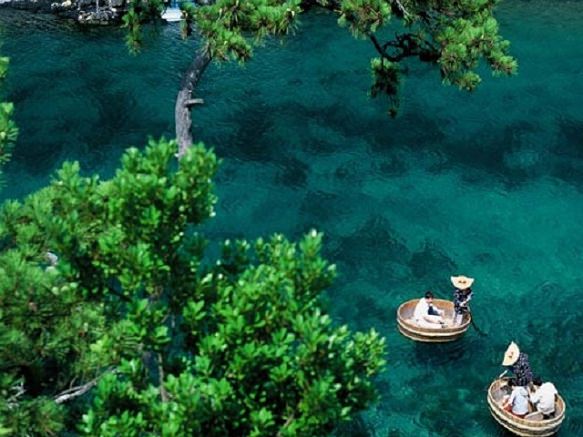-
- USA/Canada 1-800-285-2726
- Australia (02) 8006 4411

Sado Island lies just off the coast of Niigata Prefecture, located 45 km west of the city of Niigata, and is one of Japan's largest islands. This remote place has long been a destination for political exiles, many of whom ended up working in Sado's prosperous gold mine while the island is no longer the place of exile and of gold mine. Of the exiles, the three most prominent figures sent into exile to Sado were the former Emperor Juntoku, the Buddhist monk Nichiren and the founder of Noh, Zeami Motokiyo. The island is also home to the endangered Toki or Japanese Ibis, extinct in the wild but planned to be reintroduced thanks to a successful breeding program.
Sado Island has many attractions today, such as the Sado Gold Mine that offers a reproduction of gold mining activities in the 17th and 18th centuries complete with miniatures and electric powered dolls. Other attractions include Senkaku Bay with a beautiful view of the precipitous cliffs, Lake Kamo-ko where you can enjoy cherry blossoms in spring, and Toki-no-mori-koen Park where you can see Japanese crested ibises, a protected species. Sado's biggest attraction is the Earth Celebration, an annual music festival hosted by Sado's own, world renowned Kodo taiko group. The three day event is held every year in mid to late August in Ogi Town. Thousands of people come from all over Japan and the world to enjoy the festival's many events, including workshops and fringe performances during the day and the main concerts in the evenings. The island is also home to the endangered Toki or Japanese Ibis, extinct in the wild but reintroduced to the island thanks to a successful breeding program.
The Major Ski Resort & Sake Museum
Niigata rice and sake are particularly well known from this area
Water Oasis with nature harmony
Japan's most beautiful beaches and coral reefs for snorkeling
Cruising the Japan Sea By Taraibune
The Historical Site of the greatest gold silver mine in Japan
A hub of merchant shipping in the Edo Period
Forest Park where exchange with ibises